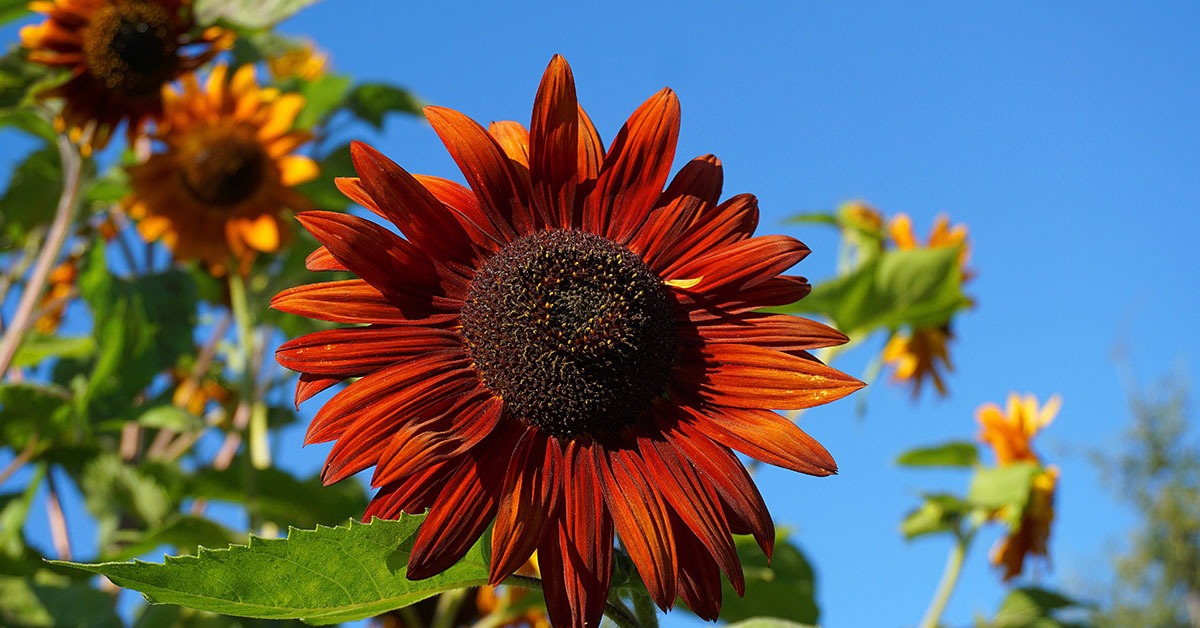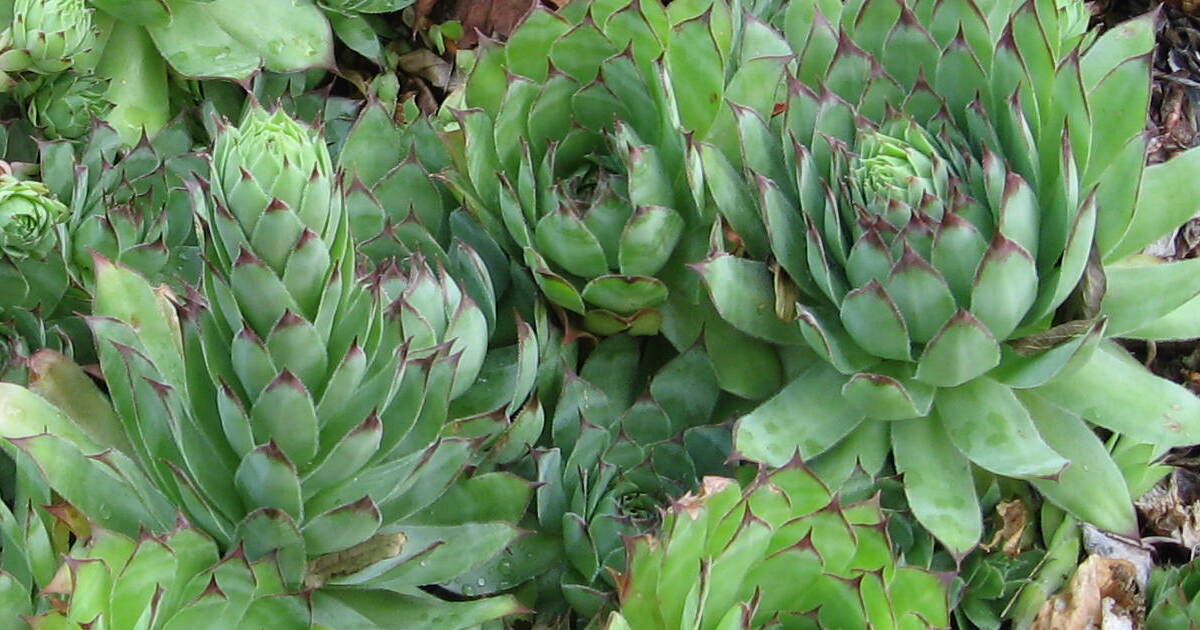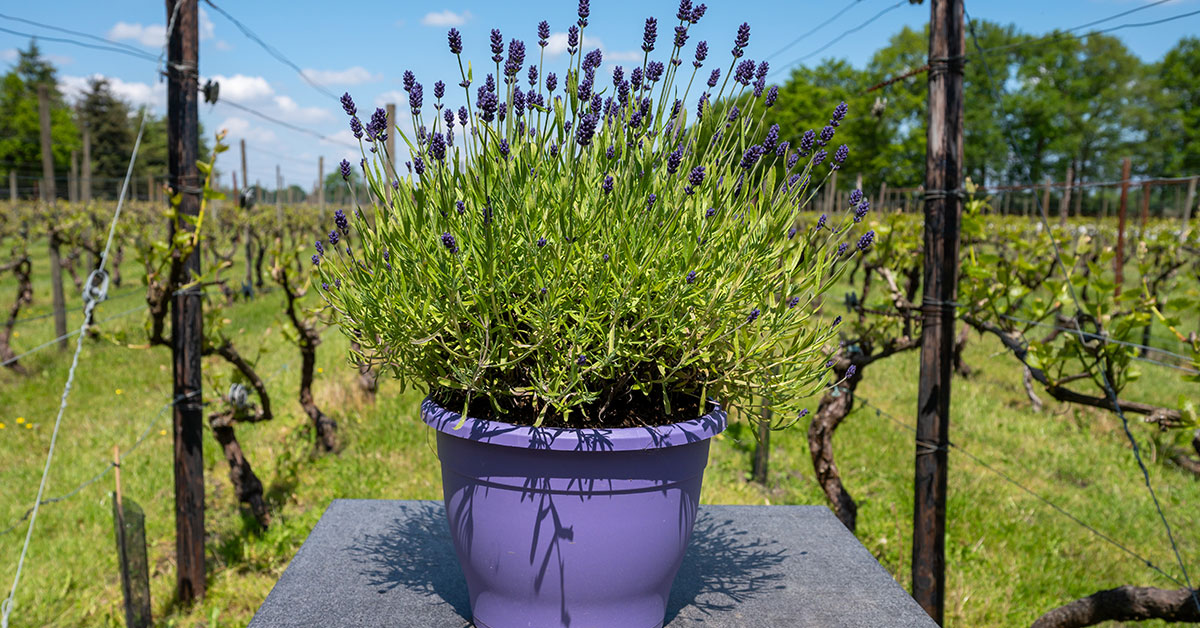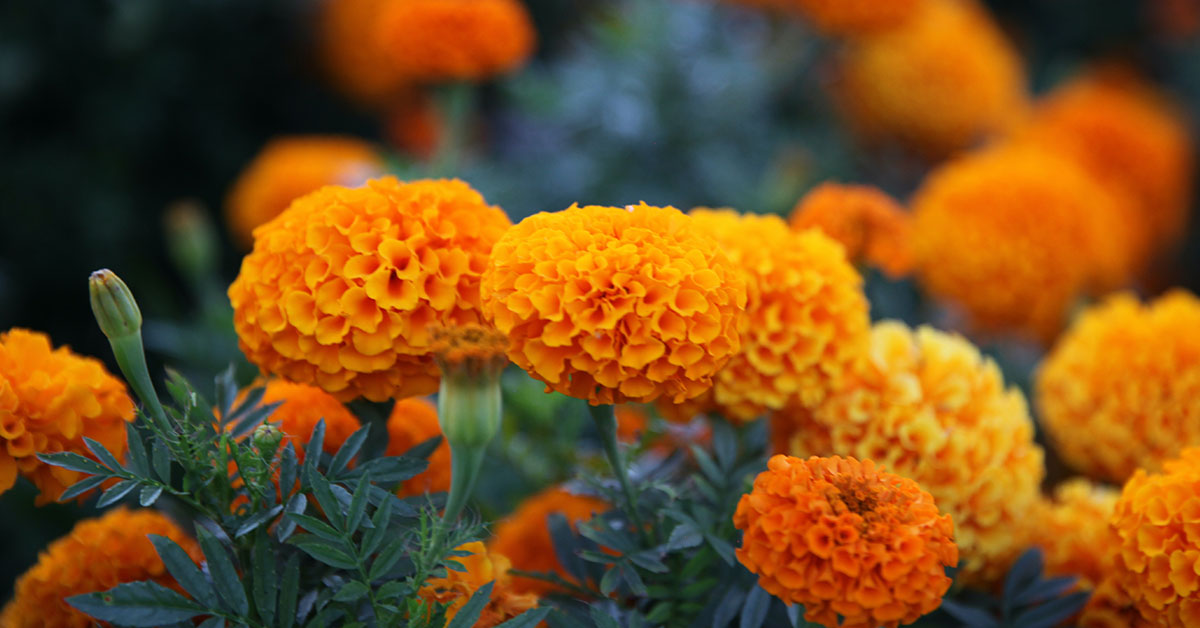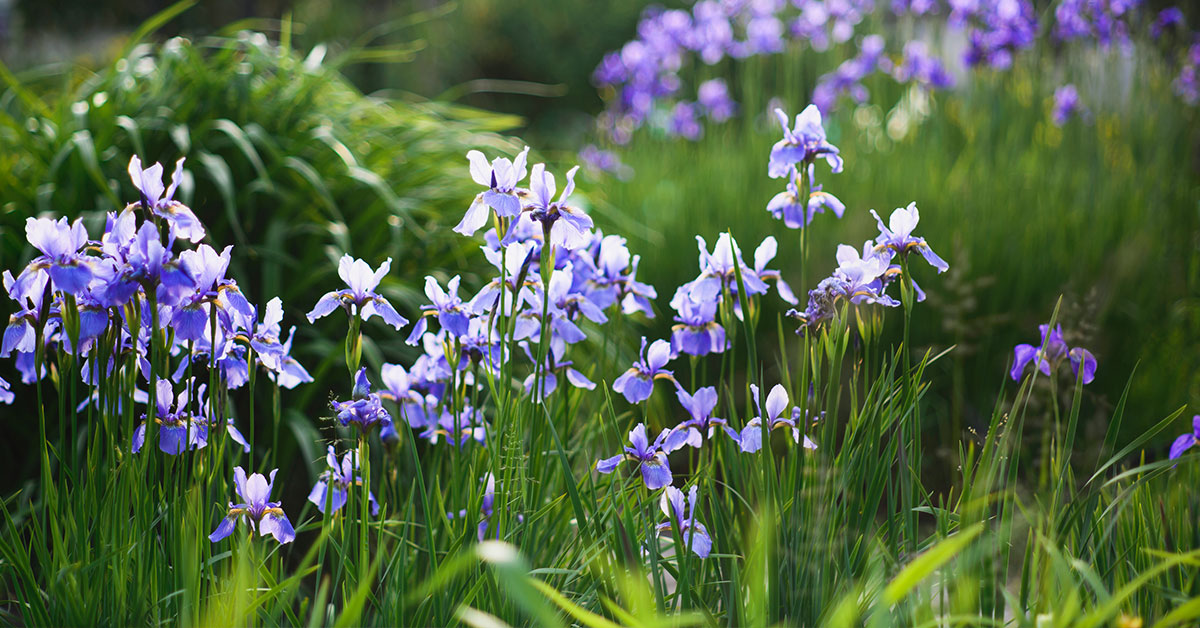In the realm of sunflowers, one variety emerges as a true regal presence, captivating all who behold its enchanting allure—the Velvet Queen Sunflower (Helianthus annuus ‘Velvet Queen’). With its deep, velvety red petals and commanding presence, this exquisite sunflower variety commands attention and admiration in gardens and floral arrangements alike.
In this article, we embark on a journey to unravel the secrets of Velvet Queen Sunflowers. We delve into their captivating characteristics, growth habits, and cultivation techniques, guiding you through the steps needed to nurture these royal blooms in your own garden.
What is a Velvet Queen Sunflower?
The Velvet Queen Sunflower (Helianthus annuus ‘Velvet Queen’) is a stunning and distinct variety of sunflower that stands out for its deep, rich, and velvety red petals. It is a popular choice for those seeking a sunflower with a bold and captivating color.
The Velvet Queen Sunflower typically grows to a height of 4 to 6 feet (1.2 to 1.8 meters), making it a medium-sized sunflower variety. The flower heads can reach a diameter of about 4 to 6 inches (10 to 15 centimeters). The plant produces a single flower head per stem, and each flower head is composed of numerous individual ray florets that create the distinct disc shape at the center.
The petals of the Velvet Queen Sunflower exhibit a velvety texture and have a rich and intense red color. The velvety appearance and deep hue resemble the luxurious velvet fabric, hence the name “Velvet Queen.” The contrast between the dark red petals and the dark brown center (known as the disc florets) creates a visually striking and dramatic effect.
These sunflowers are not only admired for their ornamental value but also for their ability to attract bees, butterflies, and other pollinators to the garden. The nectar-rich blooms serve as a valuable food source for these beneficial insects.
Velvet Queen Sunflowers can be a focal point in flower beds, borders, or mixed plantings, adding a touch of elegance and sophistication to any garden or landscape. They also make stunning cut flowers, providing a dramatic and eye-catching element in floral arrangements.
If you’re looking to create a statement with your sunflowers and introduce a touch of velvety allure to your garden, the Velvet Queen Sunflower is an excellent choice that is sure to captivate and inspire.
What does a Velvet Queen Sunflower look like?
A Velvet Queen Sunflower (Helianthus annuus ‘Velvet Queen’) has a distinct and captivating appearance. Here’s a description of what a Velvet Queen Sunflower looks like:
- Size and Height: Velvet Queen Sunflowers typically grow to a medium height, ranging from 4 to 6 feet (1.2 to 1.8 meters). This makes them slightly shorter than some other sunflower varieties, but still imposing and impressive in stature.
- Flower Head: The flower head of a Velvet Queen Sunflower is large and striking. It typically measures around 4 to 6 inches (10 to 15 centimeters) in diameter. The flower head is composed of numerous individual ray florets that surround the central disc florets.
- Petal Color: What sets the Velvet Queen Sunflower apart is its deep and velvety red petals. The rich red color is intense and vibrant, creating a captivating contrast against the dark brown or black center of the flower head.
- Petal Shape and Texture: The petals of Velvet Queen Sunflowers are elongated and slightly curved. They have a velvety texture, resembling the softness and sheen of velvet fabric, giving the sunflower its name. The velvety appearance adds a touch of elegance and sophistication to the bloom.
- Foliage: Velvet Queen Sunflowers have broad, lance-shaped leaves that are green in color. The leaves provide a lush and vibrant backdrop to the stunning flower heads.
The overall visual impact of a Velvet Queen Sunflower is one of richness and drama. The deep red petals, velvety texture, and contrasting dark center make these sunflowers stand out in any garden or floral arrangement. Whether in a garden bed, border, or as a cut flower, Velvet Queen Sunflowers bring a touch of elegance and allure to their surroundings.
How to grow Velvet Queen Sunflowers
To grow Velvet Queen Sunflowers (Helianthus annuus ‘Velvet Queen’) and enjoy their stunning and velvety red blooms, follow these steps:
- Select a Suitable Location: Choose a sunny spot in your garden that receives at least 6-8 hours of direct sunlight per day. Sunflowers thrive in full sun.
- Prepare the Soil: Velvet Queen Sunflowers prefer well-draining soil with a pH between 6.0 and 7.5. Before planting, loosen the soil and remove any weeds or debris. Add organic matter like compost or well-rotted manure to improve soil fertility and drainage.
- Sow the Seeds: Directly sow the Velvet Queen Sunflower seeds into the prepared soil after the danger of frost has passed and the soil has warmed up. Plant the seeds about 1 inch (2.5 centimeters) deep and 6-12 inches (15-30 centimeters) apart, depending on the desired spacing and mature plant size.
- Watering: Keep the soil evenly moist during the germination and early growth stages. Once established, sunflowers are relatively drought-tolerant, but regular watering during dry periods can help promote healthier plants and larger blooms.
- Provide Support: As Velvet Queen Sunflowers can grow tall and their flower heads can become heavy, it’s recommended to provide support to prevent them from toppling over in strong winds. Staking individual plants or using a trellis can help keep them upright.
- Mulching and Weed Control: Apply a layer of organic mulch around the base of the plants to help retain soil moisture, regulate soil temperature, and suppress weed growth. Mulching also helps maintain a cleaner and more aesthetically pleasing garden bed.
- Fertilization: Sunflowers are generally not heavy feeders, but you can apply a balanced fertilizer or compost during the early stages of growth to provide additional nutrients. Follow the recommended dosage instructions on the fertilizer packaging.
By following these steps, you can successfully grow Velvet Queen Sunflowers and enjoy their captivating velvety red blooms in your garden. These sunflowers make stunning additions to borders, flower beds, or as cut flowers, adding a touch of elegance and sophistication to any landscape.
Common problems
While sunflowers are generally resilient and easy to grow, they can encounter a few common problems. Here are some issues you may come across when growing sunflowers and tips on how to address them:
- Pests: Sunflowers can attract pests such as aphids, slugs, snails, and caterpillars. Regularly inspect your plants for signs of infestation, such as chewed leaves or sticky residue, and take appropriate measures to manage the pests. This can include handpicking, using insecticidal soap, or introducing natural predators.
- Birds: Birds are attracted to sunflower seeds, especially as the flower heads mature. To protect the seeds, you can cover the flower heads with lightweight netting or harvest them before they fully ripen. Alternatively, you can set up bird feeders away from the sunflower plants to divert their attention.
- Diseases: Sunflowers can be susceptible to fungal diseases, such as powdery mildew, downy mildew, or rust. Ensure proper air circulation by spacing plants adequately and avoiding overhead watering. If necessary, treat affected plants with appropriate fungicides following the instructions on the product label.
- Stem or Head Rot: Excessive moisture or poor drainage can lead to stem or head rot in sunflowers. To prevent this, ensure that the soil has good drainage and avoid overwatering. Planting sunflowers in raised beds or mounds can also help improve drainage.
- Nutrient Deficiencies: Sunflowers may exhibit nutrient deficiencies, such as yellowing leaves or stunted growth. Ensure your soil is well-balanced and provides adequate nutrients. Consider conducting a soil test to determine if any specific deficiencies need to be addressed and adjust fertilization accordingly.
- Weather Damage: Strong winds or heavy rain can cause sunflower stems to break or flower heads to droop. Stake taller varieties or use supports to prevent damage. In areas prone to extreme weather, you can also provide some protection by planting sunflowers near structures or windbreaks.
- Competition with Weeds: Weeds can compete with sunflowers for nutrients, water, and sunlight. Regularly remove weeds from around your sunflower plants to minimize competition. Applying a layer of mulch can help suppress weed growth and maintain soil moisture.
By being vigilant and addressing these common problems promptly, you can ensure the health and vitality of your sunflowers. With proper care, your sunflowers will thrive, adding beauty and vibrancy to your garden.
When to harvest
To determine the right time for harvesting Velvet Queen Sunflowers (Helianthus annuus ‘Velvet Queen’), follow these guidelines:
- Petal Condition: Wait until the flower petals have fully opened and are displaying their rich and velvety red color. The petals should be vibrant and not showing signs of wilting or browning. Harvesting at this stage ensures that you capture the beauty and intensity of the flower at its peak.
- Seed Development: Check the center of the flower head where the seeds are forming. The back of the flower head should turn brown or yellow, indicating that the seeds are maturing. Allow enough time for the seeds to fully develop before harvesting.
- Timing: Harvest Velvet Queen Sunflowers when they are at their prime bloom, typically around 70-90 days after sowing the seeds. However, it’s important to consider the specific growing conditions and the maturity indicators of the individual flower heads. Each sunflower head may mature at a slightly different rate, so monitor them closely.
- Touch Test: Gently touch the back of the flower head and feel for firmness. The seeds should feel firm and well-developed, indicating they are mature and ready for harvest. If the seeds still feel soft or immature, allow more time for them to ripen.
- Harvesting: Cut the stem of the sunflower below the flower head using sharp garden shears or pruners. Leave several inches of stem attached for easier handling and arranging.
- Drying: Hang the harvested sunflower heads upside down in a dry, well-ventilated area to allow the seeds to further mature and dry. This drying process helps ensure the seeds are fully dry before storage or further use.
Once the flower heads and seeds are completely dry, you can gently rub or brush the seeds off the flower head. Store the harvested seeds in a cool, dry place in airtight containers for future planting or culinary use.
By following these guidelines, you can harvest Velvet Queen Sunflowers at their peak, capturing the velvety beauty of their petals and ensuring the seeds are fully mature for storage or propagation.


